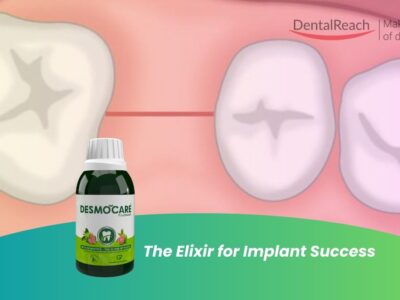Informed consent is the process of educating and empowering patients to make voluntary decisions about their care. In dentistry, it means providing the patient (or, for minors, their custodial parent/guardian) with clear information on their diagnosis and treatment so they can make an informed choice[1]. This concept is both an ethical duty and a legal requirement. This article reviews the legal frameworks and ethical principles for consent, outlines the key elements to discuss, addresses special issues (children, rural/low-literacy patients), and gives best practices for documentation.
Indian law (e.g. the Indian Contract Act) and the Dental Council of India (DCI) Code of Ethics mandate that dentists obtain valid consent before treatment. Ethically, principles of autonomy (patient self-rule), beneficence (doing good), and veracity (truth-telling) underlie this duty.
Legal Foundations of Consent in India
Indian law defines competent consent and its limits. Under Section 11 of the Indian Contract Act, only a competent person of sound mind aged 18 or above can legally consent to treatment[2]. Thus, minors (below 18) cannot give legal consent on their own. Moreover, the Indian Penal Code (Sec. 90) invalidates any consent obtained by fraud, coercion, undue influence, intoxication or when the person does not understand what they are consenting to[3]. In short, consent must be voluntary, informed, and given by a competent individual[2][3]. For example, a patient who signs a form believing it’s a routine guarantee (not understanding risks) has not given valid informed consent.
The Dentists Act, 1948 (Section 17A) empowered the DCI to prescribe professional standards and etiquette[4]. Consequently, the Dentists (Code of Ethics) Regulations, 1976 set duties for dentists toward patients. For instance, DCI’s ethical code states that personal patient information learned in practice “should be kept in the utmost confidence”[5]. By implication, consent (and all related discussions) should also be treated confidentially.
India’s Supreme Court has further guided consent standards. In landmark cases (e.g. Samira Kohli vs. Prabha Manchanda, 2008) the Court has insisted on “real and valid” consent. It held that consent must be specific to each procedure: consent for a diagnostic procedure does not automatically cover additional treatment[6]. In Kohli, doing an unplanned hysterectomy (beyond the consented laparoscopy) was ruled negligence, even though it saved the patient time and cost[7]. The Court reaffirmed that any extra surgery requires separate consent. In practice, Indian courts follow a “Bolam”-style (doctor-based) standard: the information given should be what a responsible body of medical practitioners would consider appropriate[8]. (This is often called “real consent,” in contrast to the broader “reasonable patient” standard in some countries.) In summary, Indian law demands that dentists seek and secure explicit consent before treatment, ensuring disclosure of the planned procedures, their purpose, risks, benefits, alternatives, and the consequences of not treating[9][8].
Ethical Principles Underlying Consent
Informed consent is rooted in core biomedical ethics. The principle of autonomy recognizes the patient’s right to self-determination. Dentists must respect each patient’s choice to accept or refuse treatment[10]. As one ethics slide notes, “Patient autonomy includes notions of self-governance”[10]. This means fully involving patients in decisions about their dental care, after ensuring they understand their options. Linked to autonomy is veracity (truthfulness): honesty is the “bedrock of the trusting doctor–patient relationship”[11]. Dentists must therefore be frank about diagnoses, uncertainties and likely outcomes; any deception or withholding of information undermines consent.
The principle of beneficence (“to do good”) also influences consent. Dentists should recommend treatments that serve the patient’s welfare and explain why these are in the patient’s best interest[12]. This includes explaining why a proposed therapy is preferable to no treatment, and how risks are justified by potential benefits. In balancing beneficence and autonomy, the dentist’s duty is to present expert guidance objectively, then honor the patient’s informed choice. In short, upholding autonomy, beneficence and veracity means giving patients the knowledge they need to decide freely, without manipulation or prejudice.
Key Elements of Valid Dental Consent
A valid informed consent conversation in dentistry should cover several key items, such as:
- Diagnosis and Treatment Plan: The patient’s oral condition and recommended procedures must be clearly described. Explain what the problem is (e.g. “You have decay in tooth #15”) and what the proposed treatment entails (e.g. “We will do a root canal on this tooth because…”). This grounds the discussion in the patient’s situation[14].
- Nature and Purpose: Clarify the purpose of each procedure (e.g. “We will extract this tooth to prevent infection spreading to your jaw”) and the main steps involved[14]. Patients should know the basic idea of what will happen.
- Risks and Complications: Discuss significant possible risks or side effects of the proposed treatments (e.g. “There is a small risk of numbness”, “the tooth could fracture”, “you might need follow-up care”)[14]. Being honest about even uncommon complications is part of respecting the patient’s right to know.
- Benefits and Prognosis: Explain the expected benefits or outcomes with treatment (e.g. “This will relieve pain and prevent further decay”). Also contrast this with the prognosis without treatment. For example, outline likely disease progression if the patient does nothing[14].
- Alternatives: All reasonable alternative options should be presented, including doing no treatment. For example, if an extraction is planned, alternatives might include a root canal or watchful waiting. (The ADA Code similarly instructs dentists to inform patients of alternatives[13].) Even if an alternative is less effective, it should be disclosed so the patient can weigh choices.
- Refusal Consequences: Patients have the right to refuse treatment. The dentist should explain what happens if the patient declines or delays care (e.g. “If you do not replace the missing tooth, adjacent teeth may drift and cause chewing problems”). This is part of an “educated decision”[14].
In summary, consent must be voluntary, competent, informed and comprehensive[15]. Each of the above items should be communicated in a way the patient can understand. One may use the following as a checklist can help ensure nothing is omitted:
- Diagnosis
- Nature & Purpose of Treatment
- Risks & Outcomes
- Alternatives
- Prognosis if treatment is refused
- Prognosis with treatment[14].
Best Practices for Documentation
Good documentation is the dentist’s best protection. Whenever possible, obtain written informed consent. Written forms (in English or the patient’s local language) leave a clear record of what was agreed. The Indian Dental Association notes: “Indian law requires that we obtain your written informed consent for any treatment given to your child as a legal minor”[16]. By extension, it is prudent to get written consent for any invasive or irreversible dental procedure (surgeries, extractions, lengthy restorations, orthodontics, etc.), even for adult patients. A signed form can include checkboxes or lines summarizing diagnosis, planned procedures, risks, and space for patient questions. If possible, have the patient initial next to key points (e.g. anesthesia, bleeding, need for antibiotics, etc.) to show they were noted.
For patients who do not read or write well, consent can still be documented: the patient may make a thumbprint or sign with an “X,” provided an impartial witness (who understands both languages) is present to attest to the explanation. Always note in the clinical record what was discussed and understood. Brief progress notes like, “Explained treatment options and X-rays; patient questions answered; consent form signed,” help demonstrate that due process was followed. Avoid vague, blanket language like “consent for any procedure”; instead, be specific. If treatment evolves (e.g. discovering extra decay requiring more work), obtain fresh consent. As one study notes, “consent given only for a diagnostic procedure cannot be considered as consent for a therapeutic procedure”[6].
Even when only verbal consent is obtained (for minor or emergency cases), record it carefully in the chart. If possible, record the time/date and exactly what the patient was told. Photocopy signed consent forms for the patient’s file and give a copy to the patient if appropriate. Keep consent records and treatment notes indefinitely – they may be needed years later if any dispute arises[17]. In summary, meticulous documentation – ideally written consent supplemented by detailed chart notes – is best practice. It ensures transparency and helps resolve misunderstandings.
Pediatric Dentistry: Consent for Minors
When treating children, special rules apply. Legally, minors (under 18) cannot give binding consent in India[2]. A parent or legal guardian must authorize treatment. The consent form should clearly be signed by the child’s custodial parent(s) or court-appointed guardian. (For example, divorced parents often have joint guardianship; the consent of either parent is generally acceptable unless a court order says otherwise.) The consent discussion should still be held with the accompanying adult and the child present.
Even though the child cannot legally consent, ethical practice encourages involving the child in an age-appropriate way. Dentists should explain the procedure in simple terms and seek the child’s assent. For example, “We need to fix this tooth so you won’t have a toothache, okay?” While the parent signs consent, eliciting the child’s willingness reduces anxiety and helps them cooperate. If a mature adolescent strongly refuses and the treatment is elective, the dentist should carefully reconsider and re-discuss with parent and child.
The Indian Dental Association emphasizes the need for written consent in pediatric cases. For instance, an IDA resource states: “Indian Law requires that we obtain your written informed consent for any treatment given to your child as a legal minor”[16]. If someone other than a parent (a relative or guardian) brings the child, verify their authority or have the actual parent called in to sign. Only in true emergencies (life- or tooth-threatening situations when no guardian is available) may the dentist treat to prevent harm under the principle of implied consent; still, this should be the exception and must be documented.
Low-Literacy and Rural Populations
Obtaining true informed consent can be challenging in rural or low-literacy communities, where medical vocabulary and written forms may confuse patients. To meet this challenge, dentists should use plain language and culturally appropriate communication. Speak slowly, avoid jargon, and use examples or analogies familiar to the patient’s background. For instance, compare tooth decay to a “hole like in the wall” that needs repair. Visual aids – such as tooth charts, X-rays, intraoral photos, or models – can help patients “see” the problem and proposed treatment.
Studies have shown that simplifying consent documents and verbal explanations greatly improves understanding among low-literacy patients[18]. Using short sentences, large fonts, and simple terms (e.g. “numbness” instead of “anesthesia”) can make a big difference. In some cases, using audio or video materials in the local language is helpful.
If the patient cannot read the consent form, go through it line by line and then ask them to explain what they understood (a “teach-back” method). An independent witness (ideally someone fluent in both the patient’s dialect and the consent language) should be present. When signing, the patient may mark with a thumbprint; document the witness name and relationship. Always note in the record how the explanation was given and confirm that the patient understood the key points. This extra effort helps ensure consent is genuinely informed, not just a perfunctory formality.
Common Misunderstandings and Pitfalls
Despite best intentions, dentists often face misunderstandings about consent. Some frequent issues are:
-
- Verbal vs. Written Consent: Many practitioners believe a verbal “go-ahead” is sufficient. Legally, yes, simple verbal consent can be valid. However, it is nearly impossible to prove in court if the patient later claims they weren’t informed. Thus, written consent is strongly advised for any significant procedure. In a survey, about 72% of dentists reported having patients sign a consent form[17]. As noted above, written consent clarifies exactly what was agreed.
- Consent Scope: Consent is procedure-specific. A common mistake is assuming one form covers everything in a visit. In reality, permission given for X-rays does not cover doing an extraction, or consent to “do whatever needs to be done” does not authorize extra work beyond what was discussed. Indian courts emphasize this specificity[6]. Always specify the exact procedures on the consent form or re-consent when the plan changes.
- Implied Consent is Not Enough: Simply bringing a patient to the chair or examining them does not imply informed consent. As one consumer court observed in a wrong-tooth extraction case, “implied consent is not informed consent”[19]. The patient must knowingly agree to that particular treatment.
- Consent for Minors: Some dentists rely on whichever adult is present. Legally, only a parent/guardian’s signature is valid for a child. Having a school teacher or older sibling “okay” the treatment is not sufficient. Always check guardianship if in doubt.
- Assent vs. Consent: Children’s assent (their verbal agreement) is ethically important but not a legal substitute. A child might say “yes” out of fear or misunderstanding; it is the parent’s consent that matters legally.
Being aware of these pitfalls can help avoid future disputes. Whenever there is uncertainty, it is safer to slow down: review the plan with the patient (or guardian) once more and document that they understood and agreed.
Informed Refusal and Patient Autonomy
Informed consent includes the patient’s right to refuse treatment. Autonomy means patients can accept or decline recommended care[20]. When a patient declines treatment, the dentist should respect the decision but also ensure it is truly informed. This involves asking why the patient is hesitant, clarifying any misconceptions, and carefully explaining the potential risks of refusing (for example, how decay could progress). The dialogue should be as thorough as a consent discussion.
Importantly, record the refusal. A note in the chart might read: “Patient informed that without filling #19 tooth may require extraction in future. Patient has decided to delay filling and will return for follow-up.” Having a dated refusal note can protect both patient autonomy and the dentist’s liability. It shows that the patient’s decision was respected after due explanation.
The DCI Code’s emphasis on autonomy implies dentists must honor refusals. An ethics slide bluntly states: “Patient has full right to decide to refuse or accept treatment”[20]. In practice, this means never forcing treatment. If a patient (or guardian) persists in refusal, the dentist may need to decline to treat further if doing so would harm the patient or liability is too high, and instead refer to another practitioner or counsel regularly.
Conclusion
Valid informed consent is the bedrock of ethical dental practice in India. Legally, dentists must obtain free and informed agreement from capable patients (or guardians) before treatment[2][7]. Ethically, it honors patient autonomy and builds trust. Special care is needed for children and low-literacy patients, using age-appropriate language and documentation. Finally, every consent (and refusal) should be carefully recorded.
Sources: Indian legal and ethical standards (Indian Contract Act, IPC, Dentists Act/Regulations) and dental ethics guidelines[21][9]; Dental Council of India Code of Ethics[5]; ADA Code of Ethics[13]; Supreme Court case Samira Kohli[7]; Indian dental surveys and case law[6][19]; dental ethics slide material[1][15]; Indian Dental Association resources[16]; and other medical-ethics literature[18][12].
References
[1] [2] [3] [4] [5] [10] [11] [12] [14] [15] [20] [21] 16. Ethics-in-Dentistry.pdf
file://file-KhXCHhErhpqSk2bjpf6im5
[6] [8] [9] [17] pdfs.semanticscholar.org
https://pdfs.semanticscholar.org/d949/c3dd35b290ecb29ab2b25a073021a49e4f12.pdf
[7] Informed consent: a case analysis of Samira Kohli vs. Prabha Manchanda – iPleaders
https://blog.ipleaders.in/informed-consent-case-analysis-samira-kohli-vs-prabha-manchanda/
[13] ADA Ethics: Patient Autonomy | American Dental Association
https://www.ada.org/about/principles/code-of-ethics/patient-autonomy
[16] Indian Dental Association
https://www.ida.org.in/Membership/Details/PaediatricDentistry
[18] Simplifying informed consent as a universal precaution | Scientific Reports
[19] wrong+extraction+of+tooth | Indian Case Law | Law | CaseMine
https://www.casemine.com/search/in/wrong%2Bextraction%2Bof%2Btooth




















Comments